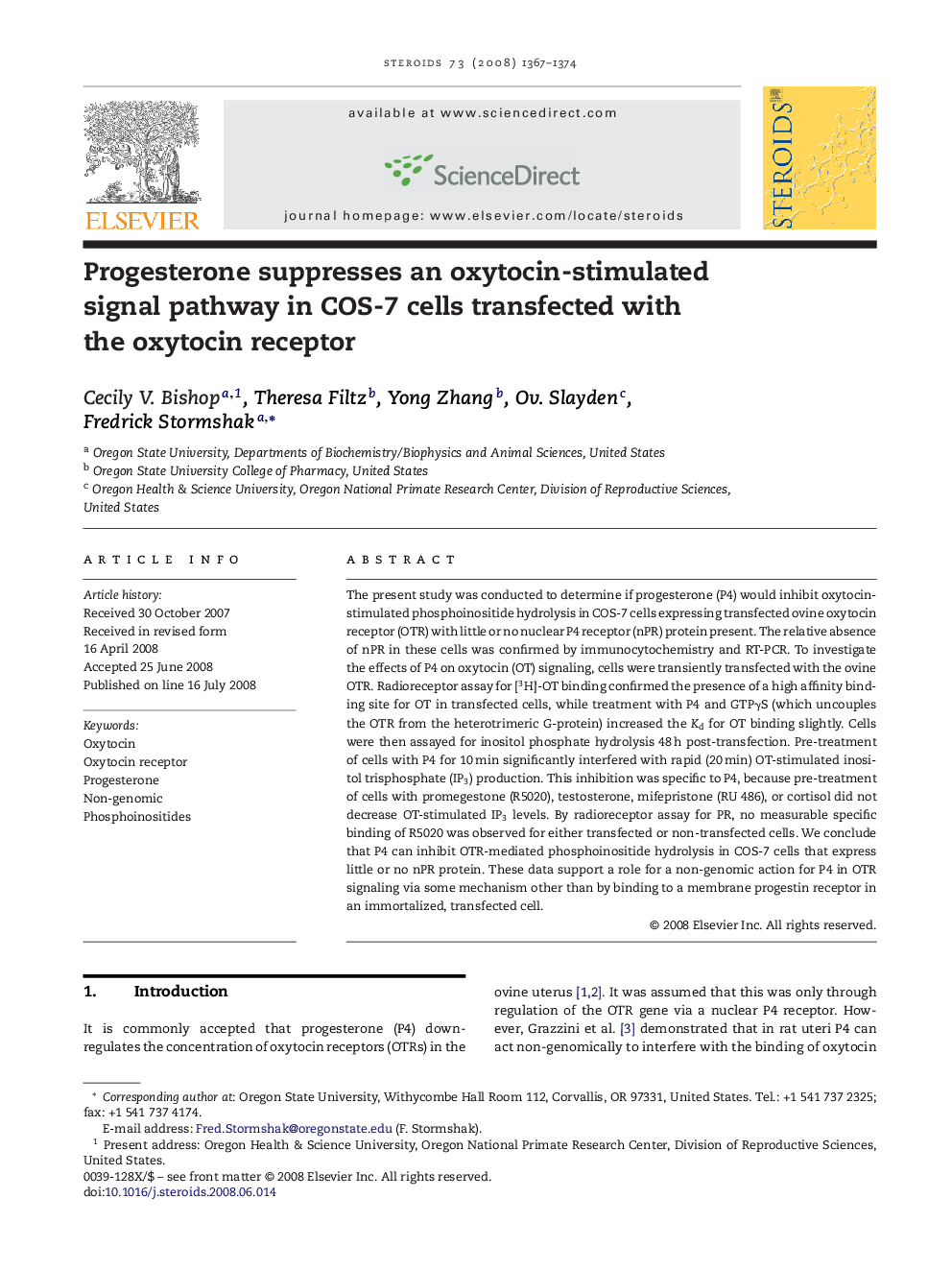| Article ID | Journal | Published Year | Pages | File Type |
|---|---|---|---|---|
| 2028688 | Steroids | 2008 | 8 Pages |
Abstract
The present study was conducted to determine if progesterone (P4) would inhibit oxytocin-stimulated phosphoinositide hydrolysis in COS-7 cells expressing transfected ovine oxytocin receptor (OTR) with little or no nuclear P4 receptor (nPR) protein present. The relative absence of nPR in these cells was confirmed by immunocytochemistry and RT-PCR. To investigate the effects of P4 on oxytocin (OT) signaling, cells were transiently transfected with the ovine OTR. Radioreceptor assay for [3H]-OT binding confirmed the presence of a high affinity binding site for OT in transfected cells, while treatment with P4 and GTPγS (which uncouples the OTR from the heterotrimeric G-protein) increased the Kd for OT binding slightly. Cells were then assayed for inositol phosphate hydrolysis 48 h post-transfection. Pre-treatment of cells with P4 for 10 min significantly interfered with rapid (20 min) OT-stimulated inositol trisphosphate (IP3) production. This inhibition was specific to P4, because pre-treatment of cells with promegestone (R5020), testosterone, mifepristone (RU 486), or cortisol did not decrease OT-stimulated IP3 levels. By radioreceptor assay for PR, no measurable specific binding of R5020 was observed for either transfected or non-transfected cells. We conclude that P4 can inhibit OTR-mediated phosphoinositide hydrolysis in COS-7 cells that express little or no nPR protein. These data support a role for a non-genomic action for P4 in OTR signaling via some mechanism other than by binding to a membrane progestin receptor in an immortalized, transfected cell.
Related Topics
Life Sciences
Biochemistry, Genetics and Molecular Biology
Biochemistry
Authors
Cecily V. Bishop, Theresa Filtz, Yong Zhang, Ov. Slayden, Fredrick Stormshak,
